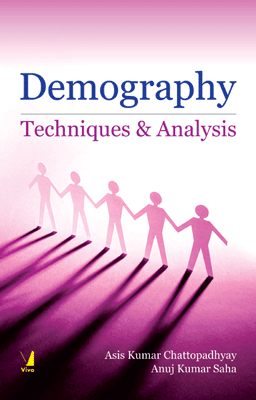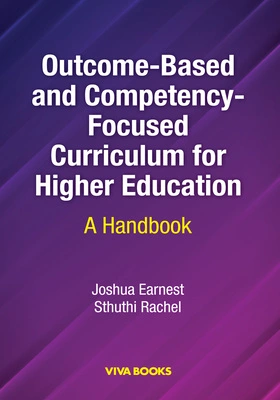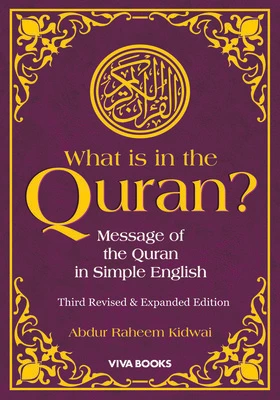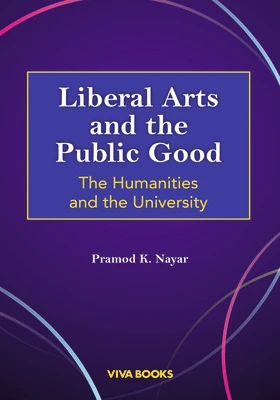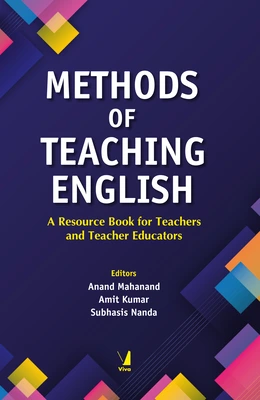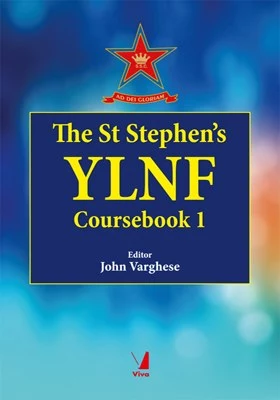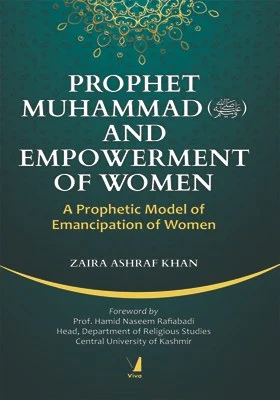Demography
Demography
Techniques & Analysis
₹1,345.50 ₹1,495.00 Save: ₹149.50 (10%)
Go to cartISBN: 9788130921181
Bind: Hardbound
Year: 2017
Pages: 328
Size: 6 x 9 Inch
Publisher: Viva Books Originals
Sales Territory: Worldwide
Description:
The book covers most of the recent and advanced techniques for estimating demographic parameters for populations with limited and defective data. Direct and indirect estimation techniques to analyse data and estimates are compared, accompanied by illustrative figures. The book has employed these useful techniques relevant to the various demographic components of population change, namely, fertility, mortality, migration and nuptiality, the most neglected component of population change in demography with illustrations that are mostly uncommon in a book at this time. The indirect techniques that have been used in this book in various analyses are termed as "Disaster Rescue".
Consisting of nine chapters, the book starts with the introduction of demography with some fundamental concepts of rates and ratios, concept of stable population, demographic transition, analysis of age distribution by various polynomials along with some usual indices, estimation of mortality parameters and its adjustment by smoothing techniques to get the best possible estimates, and generating life tables based on two independent sets of survival probabilities by Brass Two Parameter Logit Life Tables System, reproductivity, estimation of fertility by Brass-Gompertz Relational Fertility Model, estimation of nuptiality parameters along with an alternative approach different from the recommended one, population projection, migration, and social and occupational mobility that has dealt with some stochastic approaches which will help the readers to understand the necessity for modelling events relating to life under a stochastic set-up as the Markov and semi-Markov models can readily explain many life situations properly.
This book is written in such a way that readers who are moderately knowledgeable in mathematics (including algebra, analytical geometry and calculus) and in stochastic process can understand the subject well. The book provides a complete and self-contained course with clearly presented content accompanied by relevant illustrations. Some notes are given for the readers to understand the problems relating to the use of data.
This book will be of use to students, researchers and teachers interested in demographic research.
Target Audience:
This book will be of use to students, researchers and teachers interested in demographic research.
Contents:
Chapter 1: Introduction to Demography • Definition and Scope of Demography • Historical Background of Formal Demography • Some Basic Measures • Ratio • The Sex Ratio at Birth • Proportion • Life Expectancy at Birth • Migration • Age and Sex Composition • Concept of a Stable Population • Some Related Definitions • Population Growth • History and Evolution • Modern Population Growth • Population Control • Population Change • Basic Measures of Growth and Decline • Arithmetic Growth • Geometric Growth • Exponential Growth • A Paradox of Growth • Demographic Transition • Model • The Basic Demographic Equation • Types of Demographic Data • The Definition of "Population" • Vital Statistics • Sample Survey • Indirect Estimation Techniques and its Necessity
Chapter 2: Age Distribution • Introduction • Age Structure of Population • Analysis of the Age Structure • Dependency Ratio • Sex Composition • Evaluation and Adjustment of Age Data • Introduction • Whipple's Index • Myers' Blended Index • Sex-Ratio Score • Age Ratio Score • United Nations Joint Score (U.N.J.S) • Smoothing and Adjustment of Age Distribution • Fitting of a Third Degree Polynomial to the • Cumulated Data for Total Population, Male • and Female Population • A Stable Population Model as Standard is Used • for Y-transformation to Compare with the • Reported Male and Female Population • Estimation of Base Population by Age and Sex • (Newton's Halving Method) • Adjustment for Heaping by Using Third • Degree Polynomial • Comparison with a Standard Age • Distribution • General Configuration of Age Distribution and its • Changes (1951-1991) • Adjustment for Errors due to Inaccurate Age Reports • or Faulty Enumeration • Adjustment for Population Aged 0-4 and 5-9 • The U.N. Secretariat Recommended Formula • Ages from 10 to 74 Newton's Halving Formula: • For Ten-year Age Groups • The Eleven Point Moving Average Methods • Carrier-Farrag Ratio Method • Dual Record System Based on Sample Registration • Areas and Surveys (Chandra Sekar and Deming Method)
Chapter 3: Mortality: Basic Measures and Indirect • Estimation • Introduction • Mortality and Life Tables • Need for Mortality Analysis • Some Important Definitions Related to Death • Sources of Death Statistics and its Quality with • Reference to Developing Countries • Measures of Mortality • Concepts and Various Conventional Measures of Mortality • The Crude Death Rate (CDR) • Infant Mortality Rate (IMR) • Early Neonatal Mortality Rates, Late Neonatal • Mortality Rates, Post-Neonatal Mortality Rates • Cause Specific Death Rate • Maternal Mortality Ratio (MMR) • The Late Foetal Death Rate • The Perinatal Mortality Rate • Specific Death Rates, Direct Standardization Rate, • Standardized Mortality Ratio • The Life Tables • Construction of a Life Table • Method of Linking Death Rates with Mortality Rates • Mortality Models • United Nations Model Life Tables • Coale and Demeny Regional Model Life Tables • East Model • North Model • South Model • West Model • Multiple-Decrements • Abridged Life Tables • Life Table Functions (Abridged Life Tables) • Interpretation of the Life Table • Limitations of Data and Their Adjustments • An Adjustment Procedure by El-Badry (JASA, 1961) • for Data on Children Everborn • Brass Method of Evaluation of Births and Death • Registration Using Age Distribution and Child • Survivorship Data • Extent of Under-Reporting of Deaths • Brass Growth Balance Method of Completeness of • Death Registration • Childhood Mortality Estimation • Brass-Sullivan Method • Brass-Trussell Method • Application of the Methods • Logit Smoothing Technique Adopted for the Childhood • Mortality • Adulthood Mortality Estimation • Estimation of Adulthood Mortality from the Widowhood • Status of Male and Female Respondents • Conditional Survivorship Method by Hill (1977) • Unconditional Survivorship Method • by Hill-Trussell (loc. cit.) • Estimation of Reference Time Periods for Adult • Survivorship Probabilities • Logit Smoothing Technique Adopted for the • Adulthood Mortality • Application of the Methods • Conditional Survivorship Method • Unconditional Survivorship Method • Construction of Abridged Life Tables Generated • by Brass Two Parameter Logit Life Tables System
Chapter 4: Reproductivity • Measures of Reproduction • Gross Reproduction Rate (GRR) and • Net Reproduction Rate (NRR) • Net Reproduction Rate (NRR) • The Timing of Fertility • Bongaarts Proximate Determinants of Fertility • Estimation of the Indices • Index of Marriage (Cm) • Index of Contraception (Cc) • Index of Abortion (Ca) • Index of Infecundability (Ci)
Chapter 5. Fertility: Estimation and Analysis (Important Definitions, Basic Measures and Indirect Estimation) • Introduction • Important Definitions • Sources of Fertility Data • The Fertility and its Basic Measures • Period and Cohort Fertility Analysis • Child/Women Ratio • Crude Birth Rate (CBR) • The General Fertility Rate (GFR) • Age-Specific Fertility Rates • Total Fertility Rate (TFR) • Specific Fertility Rates • Sex-Age Adjusted Birth Rate (SAABR) • Coale's Indices of Fertility • Birth Order and Parity • Parity Progression Ratio (PPR) • Indirect Estimation of Fertility • Brass Method of Fertility Estimation • Smoothing of Age • Specific Fertility Rates Generated • by Gompertz Relational Fertility Model • Use of Brass Relational Gompertz Fertility Model to • Estimate Total Fertility, Mizoram, 2001 • Parity Ratio Methods of Fertility • P/F Ratio Method of Estimating Fertility • Brass's P/F Ratio Method • Fertility Estimation by Reverse Survival Method • Rele's Procedure for the Estimation of Fertility • Coale's Model of Marital Fertility
Chapter 6: Nuptiality Analysis • Introduction and the Need for the Study of Nuptiality • Sources of Data and Their Limitations • Definition of Nuptiality • Terminology Used in the Study of Nuptiality • Singulate Mean Age at Marriage (SMAM) • Estimation of Nuptiality Probabilities • Construction of Nuptiality Tables • Age Patterns of Marriage • Derivation of a Cohort Schedule and its Analysis • Analysis of Marriage Pattern by Means of a • Model Nuptiality Schedule • Estimation of Parameters a0, K and C • Consequences of the Parametric Values of a0, K and C • Estimation of Proportion Evermarried • Goodness of Fit of the Model • Age Structure of First Marriage Frequencies • Risk of First Marriage
Chapter 7: Migration • Causes of Migration • Estimation and Evaluation of Net Migration • Differential Migration • Migration Rates • Internal Migration and Mobility • Concept of Mobility • Terms Related to Migration • Undocumented Migration • Indirect Method • Data • Balancing Equation • Data Analysis
Chapter 8: Population Projection • Population Growth • Female Population Projection by Age • Discrete Analysis • Growth of Female Population • Length of a Female Generations • Approximate Representation of Birth Functions • Determination of r0 • Population Estimation • Non-Censal Estimates • Censal Estimates • Inter Censal Estimates • AP Method • GP Method • Modification of GP Method • Combined Progression Method
Chapter 9: Social and Occupational Mobility • Social Processes • Mobility and Manpower Planning • Mobility Models and Measures • Model for Half Open Half Closed Society • Some Perfect Situations • Perfect Promotion Situation • No Promotion Situation • Possible Measures of Career Pattern • Measure of Career Pattern Based on • Mahalanobis Distance • Measure of Career Pattern Based on Entropy • Values of the Measures from the Model • An Example • Model Based on Job Market Situation • Distribution of the Number of Job Changes • Measure of Occupational Mobility • Modelling Survey Data • The Survey • Fitting of Distributions • Computation of Measure • References.
About the Authors:
Asis Kumar Chattopadhyay is a Professor in the Department of Statistics, Calcutta University. He completed his M.Sc. and Ph.D. in Statistics from Calcutta University. He has been serving the Department of Statistics, Calcutta University, for the last 23 years. Here, he is involved in teaching and research. He had served Population Studies Unit, Indian Statistical Institute, for a year. He has supervised many M.Sc., M.Phil. and Ph.D. dissertations and published 33 research papers in different national and international journals.
Professor Chattopadhyay has written two books, out of which one is an edited volume Statistics for Quality Improvement and the other one is entitled Computer Applications of Mathematics and Statistics.
Professor Chattopadhyay has been selected as a sponsored member (supported by UNFPA and French Ministry of foreign affairs) of IUSSP (International Union for the Scientific Study of Population) for the period 2005-2010.
Anuj Kumar Saha was an Associate Scientist"B"at Population Studies Unit, Indian Statistical Institute (ISI), Kolkata. He completed his M.Sc. in Statistics from Rajshahi University (now Bangladesh), M.P.S. (Master of Population Studies) and Ph.D. in Population Studies from International Institute for Population Sciences (IIPS), Deonar, Mumbai. He had been at the Indian Statistical Institute (ISI), Kolkata since 1981. Dr. Saha retired from the institute in June 2007. He still teaches the students at International Statistical Education Centre (ISEC), ISI on the request of his earlier unit, ISI.
He has published a number of research papers in both nationally and internationally acclaimed journals. Out of his research activities, two were published in two edited books.
